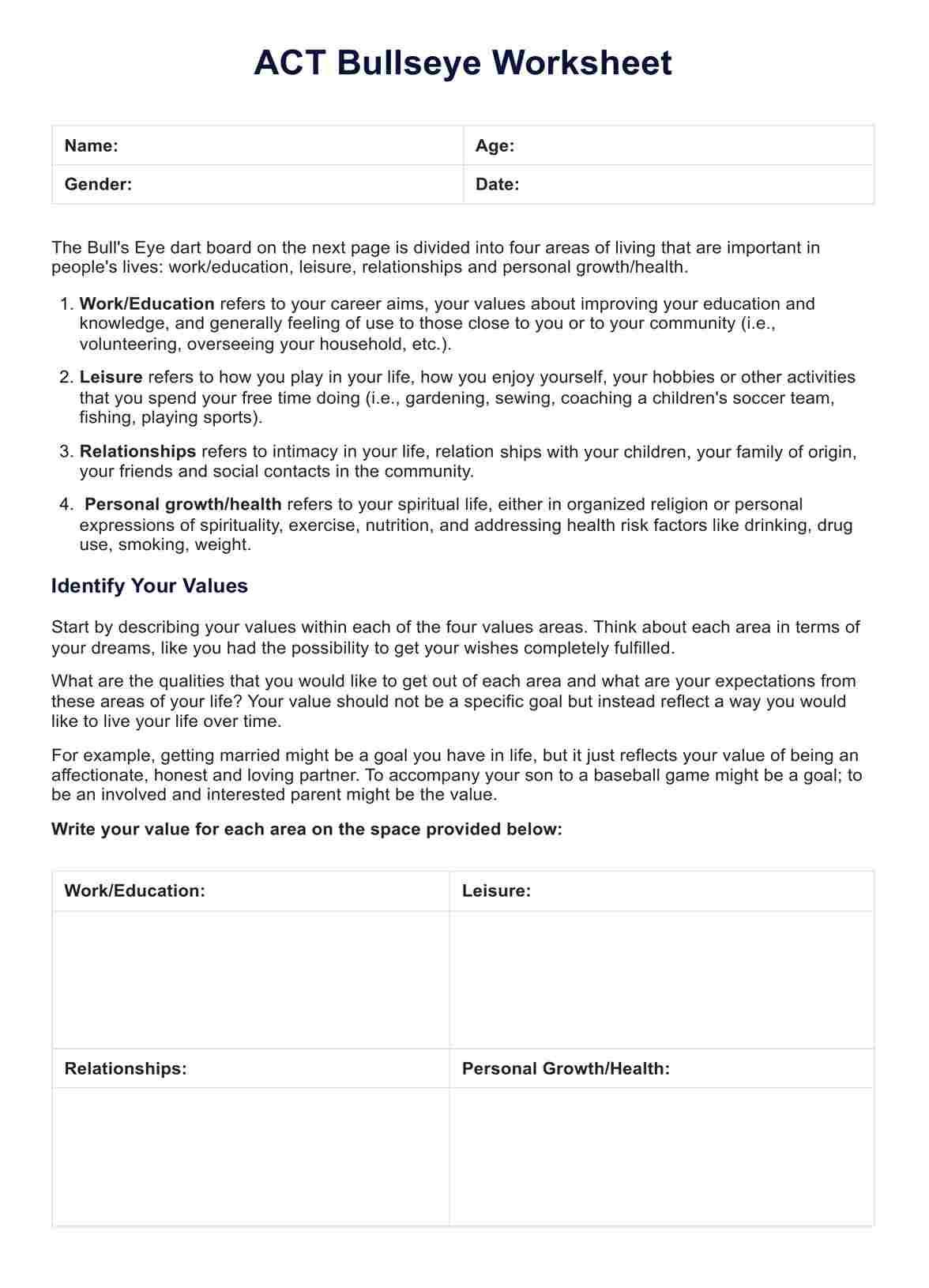Practitioners can guide clients through the worksheet, facilitate discussions, and help them develop strategies to live more by their values.

ACT Bullseye Worksheet
Integrate the ACT Bullseye Worksheet to help clients reflect on and align their goals with their values.
Use Template
ACT Bullseye Worksheet Template
Commonly asked questions
Yes, the Bullseye Worksheet can be a valuable tool in various therapy modalities, focusing on values, goal-setting, and behavioral change.
Clients may struggle to identify or prioritize their values accurately, or they may resist making changes in their behaviors.
EHR and practice management software
Get started for free
*No credit card required
Free
$0/usd
Unlimited clients
Telehealth
1GB of storage
Client portal text
Automated billing and online payments











